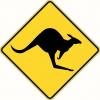Egad, a blatant sharpening thread.
I have been down in the cabinet scraper rabbit hole for about a week. I think I have learned some things, I am much better at sharpening them now for sure.
I am going to share what I think I have learned, I have some observations, and then hopefully I can pick up some other finer points from all y'all fine folks.
I am leaning mostly on Leonard Lee's "Complete Guide to Sharpening," Tauton Press, c 1995, herein after "LL."
And secondly Brian Boggs' Bench channel on youtube, hereinafter "BB" specifically this one:
Yes, that is exactly the one Jim. I have seen a couple dozen other youtubes and not wasting our time with them.
It seems to me the first step is to flatten all the faces so the ready to sharpen scraper has 90 degree edges in all the places. LL published photos of stoning his scrapers on the sides of his water stones to save wear and tear on the top surface.
I did notice BB used the same poplar guide block on two different grits of diamond stone, and I think he is exacting enough to notice if he was polluting his fine stone with loose diamond brought over from his coarse stone. I am going to remake my honing guide for card scrapers out of poplar later tonight. I am going to use a little bit of shim material so I can actually slip a card down in the slot without having to spread open the ends.
The biggest magnifier I have is 4x, with the head band and the flip up visor feature and I am really glad I dug it out. While I am learning to see, some magnification is a wonderful thing.
So with the blank fully prepped and stoned, the next step, I think, is just enough burnisher strokes in the usual directions to get a burr large enough to catch a fingernail, but small enough to be hard to see.
This is the first of my assumptions I question. When working with bare unfinished wood, can anyone come up with a compelling reason to make a larger burr, perhaps just big enough to see with the light at any angle? It just seems wasteful to me. A burr is very fragile, making bigger burrs seems like (to me) just wearing out the card scraper faster.
How many burnisher strokes to take is all over the map. LL mentions card scrapers used to be more or less 38-41 Rockwellc, the new stuff is Rc48-52; so I thought the folks needing lots of strokes maybe had the new harder stuff, but BB comes along and refers to his scraper as "Fairly soft, around Rc55."
I decided at my place to just go through the process repeatedly to find out. I don't know how hard anyone else is pushing down on their burnisher. I started with 2 draw strokes on each corner, then two strokes flattening the cat's ears, then 2 strokes on each corner rolling the burr, then 4 of each, finally getting somewhere at 8 of each, and now happy at 10 burnisher strokes for each step, 5 down that way and 5 more back up this way. This technique works for me on both my L-N and my 2 cherries card scrapers. I have no idea how many burnisher strokes you need at your place on your tools. But I know how you can find out.
The second assumption I am questioning is dealing with more and more difficult woods. I think what I see is the smoothness of the burr is more important than having the burr at any particular angle -> given my goal is the smoothest possible surface on bare unfinished wood.
One of the pics below is marginal Ash whispies on the top edge of my planing stop, but the same scraper (without resharpening) is going gang busters on the pictured hickory. My hope is my upcoming poplar guide can support the entire length of burr rolling, because as pictured the top left corner of my scraper is going to flex as the burnisher passes over.
20231221_162103.jpg20231221_162033.jpg20231221_162126.jpg





 Reply With Quote
Reply With Quote








Scraper_html_701b7dc5.jpg)
Scraper_html_m57e64c72.jpg)
